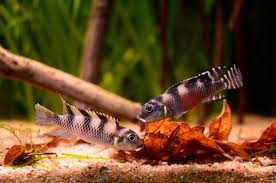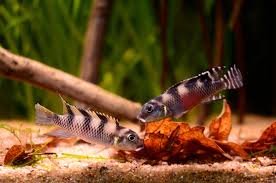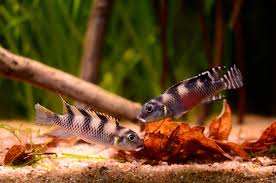Nanochromis transvestitus (3-4cm)
Nanochromis transvestitus (3-4cm)
check_circle Fast Shipping
check_circle Quality Products
check_circle Affordable Price
Reach out to us on ''available to order'' items via WhatsApp or email
Out of stock
Couldn't load pickup availability

Nanochromis transvestitus (3-4cm)
package_2
Product Description
Product Description
All our fish, shrimp and corals are bagged with fresh oxygen as well as a heat pack in winter.
When ordering livestock please select the box size and add it to your cart for accurate overnight (1-2 days) shipping costs. A small box can take 1-2 bags and a medium box 6 bags. One bag fits max 10 small (1-3cm) fish or max 2 medium (3-5cm) fish or max 1 large (>5cm) fish.
ONE SPECIES PER BAG. Eg: One bag of 10 neon tetra.
🐟 Nanochromis transvestitus
Scientific Name: Nanochromis transvestitus
Common Name: (No widely used common name, often referred to by its scientific name)
Origin: Lake Mai-Ndombe (formerly Lake Leopold II), Democratic Republic of the Congo
Size: ~2.5 inches (6.5 cm)
Lifespan: 4–6 years
Temperament: Territorial, especially during breeding
Tank Level: Bottom to mid-dweller
🌈 Description:
Nanochromis transvestitus is a stunning and unusual dwarf cichlid notable for its sexual role reversal in coloration. Females are more colorful than males, displaying bright red bellies and iridescent highlights, while males are more subdued. This unique trait gives the species its name: “transvestitus” refers to this reversal in traditional coloration roles seen in cichlids. They have a compact, torpedo-shaped body and are best appreciated in a species-specific or carefully selected community setup.
🏠 Tank Requirements:
-
Tank Size: Minimum 20 gallons (75 liters) for a pair or small group
-
Water Temperature: 75–81°F (24–27°C)
-
pH: 6.0–7.0 (slightly acidic preferred)
-
Hardness: Soft water (2–8 dGH)
-
Filtration: Gentle to moderate flow with good biological filtration
-
Aquascape: Caves, leaf litter, driftwood, and rocks; dim lighting; fine sand substrate
-
Plants: Optional but helpful for cover (e.g., Anubias, Java fern, floating plants)
🍽️ Diet:
They are omnivores and do best on a varied diet:
-
High-quality micro pellets or fine cichlid pellets
-
Frozen or live foods (brine shrimp, daphnia, bloodworms, blackworms)
-
Occasional vegetable matter or spirulina flakes
Feed in small amounts 1–2 times per day.
🧬 Breeding:
-
N. transvestitus is a cave spawner
-
Females initiate breeding and care for the eggs and fry
-
Males guard the territory
-
Provide caves or small flowerpots for spawning sites
-
Fry can be fed baby brine shrimp once free-swimming
Breeding may require conditioning with live/frozen foods and slightly acidic, soft water.
🤝 Tank Mates:
Choose peaceful, small species that won’t outcompete them or threaten fry:
-
Small tetras (like ember or neon tetras)
-
Pencilfish
-
Corydoras
-
Otocinclus
Avoid: -
Aggressive or large fish
-
Fin-nippers
-
Other territorial dwarf cichlids unless the tank is large and well-scaped
📝 Notes:
-
Rare and somewhat delicate species, best for intermediate to advanced aquarists
-
Sensitive to water quality – weekly water changes (25–40%) are essential
-
May be shy without sufficient cover
-
Best kept as a pair or alone if tank space is limited


